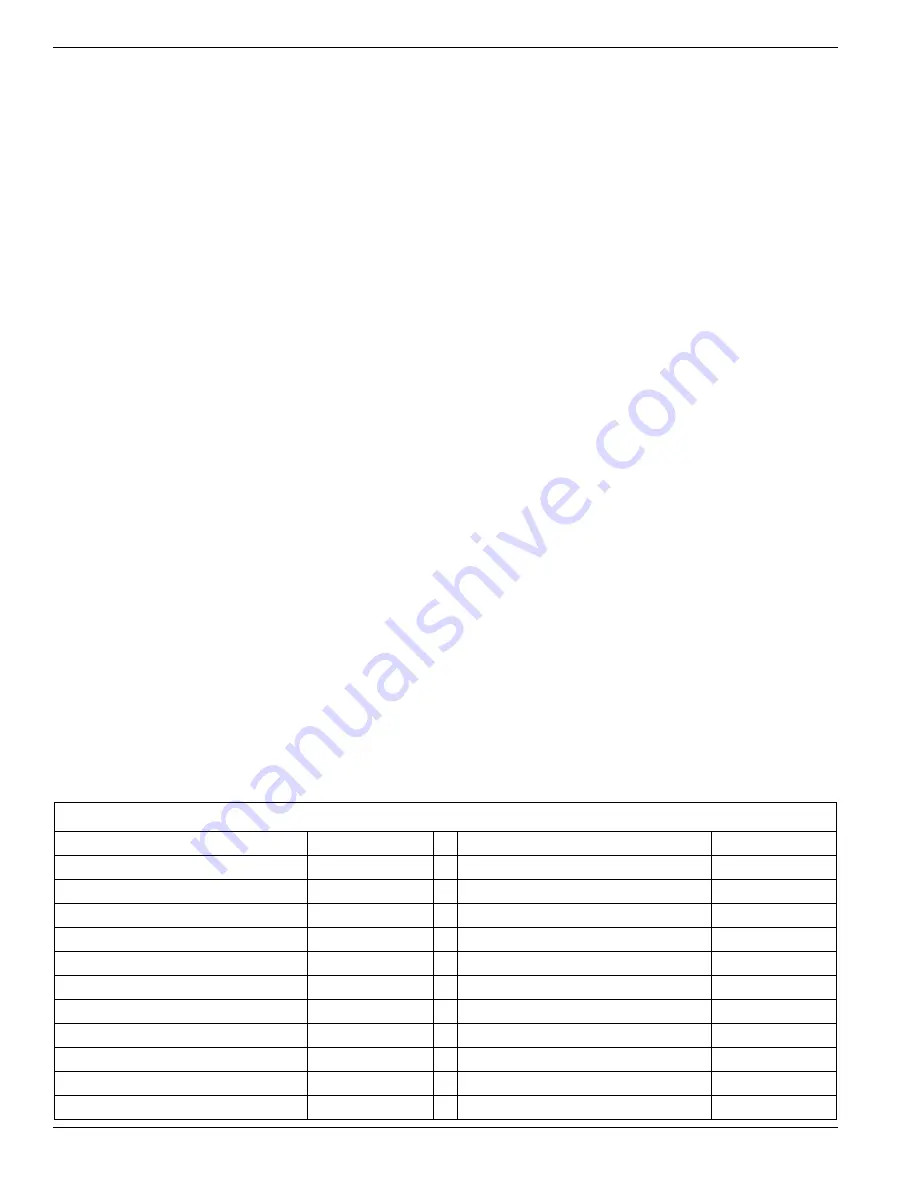
Section 2 Direct Excitation (Brush Type)
18
Diagnostic Repair Manual
Results
1.
If current was outside parameters in Steps 23 and
24, remove brushes and measure resistance.
2.
If voltage was not measured in Step 8 at either the
receptacle or the stator connection terminal strip,
replace the alternator.
3.
If voltage was not measured in Step 14, replace the
alternator.
4.
If the correct resistance was not measured in Step
26, replace the alternator.
5.
If the correct resistance was not measured in Step
17, replace the alternator.
6.
If the correct voltage was measured in Step 8 and
Step 14 and the correct resistance was measured
in Step 26, replace the voltage regulator.
Test Brushed Stator Windings
General Theory
Most brushed stators have three main windings that are
needed to produce voltage. The alternator has two main
power windings which supply power to the load and an
excitation winding to provide excitation voltage to the
rotor. It is important that these windings remain isolated
from ground or the chassis of the alternator.
Procedure
1.
Isolate all stator wires from the control panel and
voltage regulator.
2.
Set DMM to measure resistance.
3.
Every connection needs to be checked coming out
of the stator for a short to ground.
Results
1.
If any wire has a direct short to ground, or to the
chassis of the alternator, replace alternator
assembly.
2.
If all wires test good for a short to ground, refer to
flow chart.
Test 10 – Check Load Voltage and
Frequency
Procedure
Perform this test the same as Test 1 but apply a load to
the generator equal to its rated capacity. With load
applied check voltage and frequency.
Frequency should not drop below about 59 Hertz with
load applied.
Voltage should not drop below about 220 VAC nor rise
above 265 VAC with load applied.
Results
1.
If voltage and/or frequency drop excessively when
load is applied, refer to flow chart.
2.
If load voltage and frequency are within limits, end
tests.
Test 11 – Check Load Watts and
Amperage
Procedure
Add up the wattages or amperages of all loads powered
by the generator at one time. If desired, a clamp-on
ammeter may be used to measure current flow.
See the
to determine
generator limits.
NOTE:
All figures are approximate. See data label on
appliance for wattage requirements.
Wattage Reference Guide
Device
Running Watts
Device
Running Watts
*Air Conditioner (12,000 Btu)
1700
Hand Drill
250 to 1100
*Air Conditioner (24,000 Btu)
3800
Hedge Trimmer
450
*Air Conditioner (40,000 Btu)
6000
Impact Wrench
500
Battery Charger (20 Amp)
500
Iron
1200
Belt Sander (3")
1000
*Jet Pump
800
Chain Saw
1200
Lawn Mower
1200
Circular Saw (6-1/2”)
800 to 1000
Light Bulb
100
*Clothes Dryer (Electric)
5750
Microwave Oven
700 to 1000
*Clothes Dryer (Gas)
700
*Milk Cooler
1100
*Clothes Washer
1150
Oil Burner on Furnace
300
Coffee Maker
1750
Oil Fired Space Heater (140,000 Btu)
400
















































